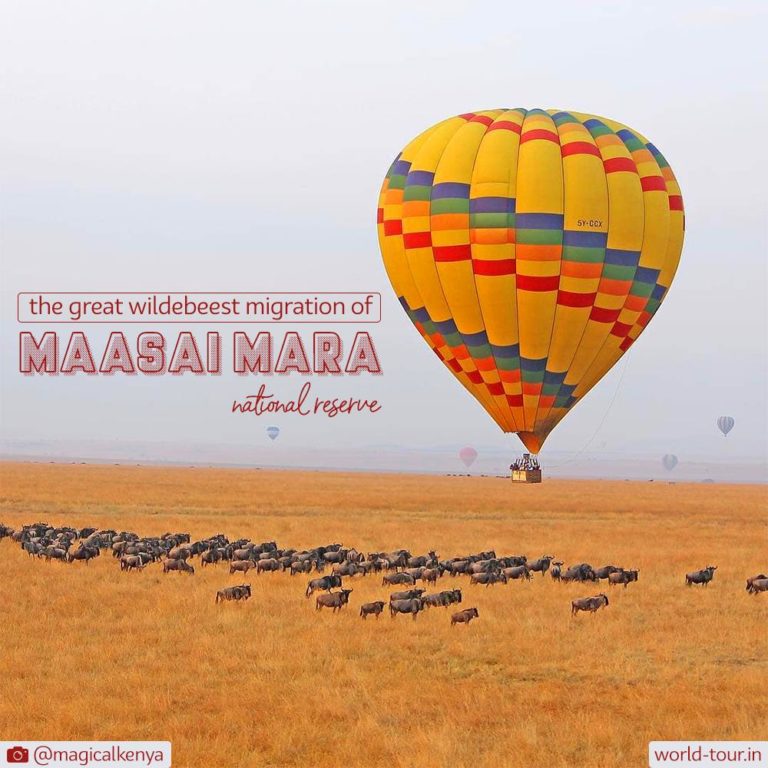
– photo by Kenya Tourism Board
Maasai Mara Nature Reserve, also known as Masai Mara or the Mara, is a protected area for wildlife in Kenya, and sees the greatest wildlife spectacle on Earth – the Great Wildebeest Migration. Every year, millions of wildebeest, joined by zebras and antelopes, travel north from the Serengeti in Tanzania to Kenya’s Maasai Mara, probably in search of greener pasture.
While the migration happens year-round, visitors typically head here between July and October to witness the phenomenon. It is during the months of July and August, that the animals cross the Mara River, which is filled with hungry crocodiles, waiting to pick them off. Their perilous journey runs in a clockwise circle, covering some 2,900 kilometers. Annually, an estimated 250,000 wildebeest and 30,000 zebras die en route as a result of predators, exhaustion, thirst or disease.
August: The grasses of the western Serengeti are turning yellow and the herds head north. After crossing the Grumeti River in Tanzania, the wildebeest and zebra head to Kenya’s Lamai Wedge and the Mara Triangle. Before they can reach the lush plains of the Masai Mara, they have to make a perilous river crossing. Many wildebeest become prey of the ferocious crocodiles lurking in the river.
September – November: The Mara plains are filled to the brim with large herds of wildebeest, zebras and other animals, a feast for the predators.
November – December: The rains start in the south again and the herds begin their long trek back south to Tanzania’s Serengeti plains to give birth to their young.
The best way to witness this event is to know the path of the migration and to try to plan your visit accordingly. Plans may sometimes be upset if the seasons change early and unexpectedly.
To get a birds eye view of the Mara and you can choose to go hot air ballooning, and it is great fun.
Follow our blog for your daily dose of travel inspiration, information and tips. We try to publish atleast one article each day. Check this space for all the latest posts.